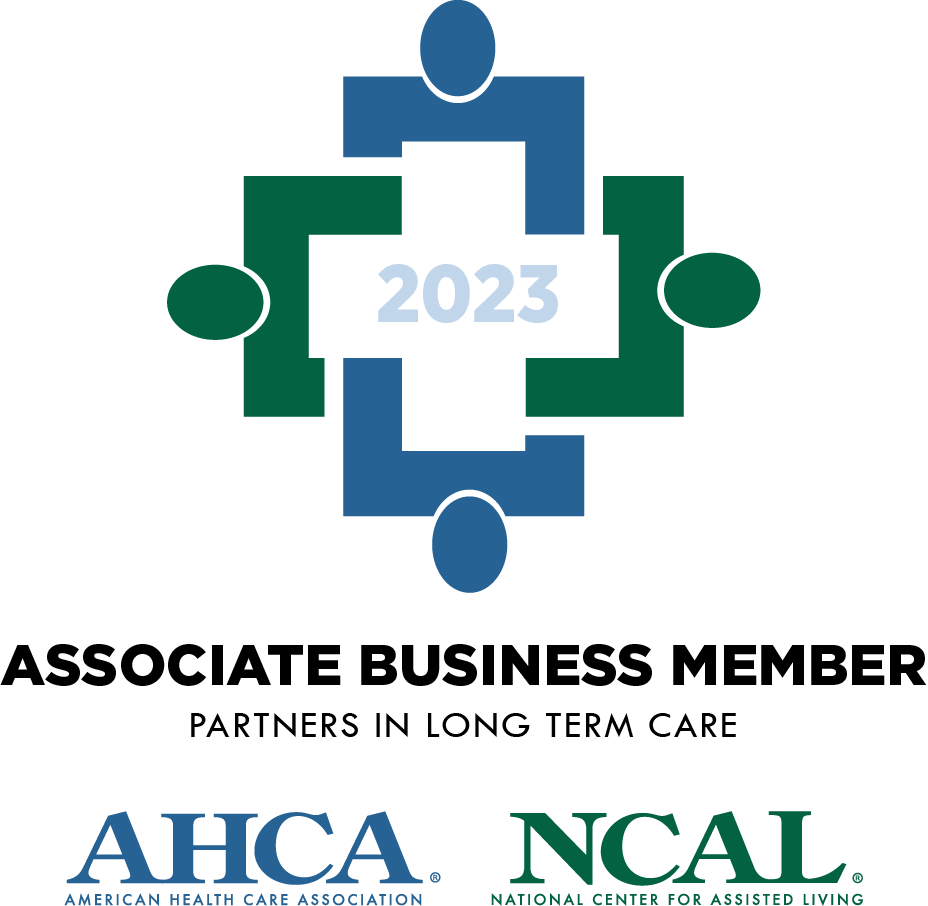Risk management in healthcare, particularly in Skilled Nursing Facilities (SNFs), ensures high-quality patient care and operational stability.
This article focuses on how SNF operators can effectively manage risks to safeguard their residents and staff. We will explore the integral roles of patient safety measures, incident report analysis, and the Chief Risk Officer in SNFs.
Additionally, we’ll discuss the significance of conducting thorough healthcare risk assessments in these facilities. Our goal is to provide SNF operators with practical insights and strategies to navigate the unique challenges they face in healthcare risk management, ultimately enhancing the care and safety of their residents.
The Role of Patient Safety in Risk Management
Patient safety in Skilled Nursing Facilities (SNFs) is defined as the prevention of harm to patients. It’s a fundamental aspect of healthcare quality, ensuring that residents receive the care they need without suffering additional injuries or illnesses. The importance of patient safety in SNFs cannot be overstated, as it directly impacts the health and well-being of a vulnerable population.
Linking Patient Safety to Risk Management Strategies
Proactive Identification of Risks
Implementing a patient safety framework helps identify potential risks, such as medication errors or falls.
Creating a Safe Environment
This involves regular safety audits, staff training, and updating protocols to mitigate risks.
Incident Reporting and Analysis
Encouraging transparent reporting of incidents, followed by thorough analysis, is crucial. This process leads to a better understanding of how and why safety breaches occur.
Continuous Improvement
Feedback from patient safety measures informs risk management strategies, enabling SNFs to continually adapt and improve their care processes.
Engaging Staff and Residents
Involving staff and residents in safety initiatives ensures a more comprehensive risk management approach, fostering a safety and accountability culture.
By integrating patient safety into the core of their risk management programs, SNFs can enhance their care quality, reduce the likelihood of adverse events, and improve overall resident satisfaction.
The Expanding Role of Healthcare Risk Managers
The role of healthcare risk managers in skilled nursing facilities and the broader healthcare sector has significantly evolved. These professionals now navigate diverse responsibilities, extending beyond traditional risk assessment.
Their portfolio includes managing insurance and claims, overseeing financing, and preparing for emergencies. Risk managers also play a critical role in event and incident management, ensuring effective responses to possible issues.
Their involvement in diverse areas, such as clinical research and psychological care, highlights the holistic approach necessary in today’s healthcare risk management. This expanded role underscores the multifaceted nature of ensuring patient safety and operational stability in healthcare settings.

Understanding the Risk Management Enterprise in Healthcare
The risk management enterprise in the healthcare industry, especially in skilled nursing facilities, encompasses various activities to identify, assess, and mitigate risks affecting patient care and facility operations. Its significance lies in protecting patients, staff, and the organization from potential harm, legal challenges, and financial losses.
Key Components and Functions
- Risk Identification: Systematically identifying potential risks impacting patient safety and facility operations.
- Risk Assessment: Evaluating the identified risks regarding their likelihood and potential impact.
- Risk Control: Implementing strategies to mitigate identified risks, including policy changes, staff training, and resource allocation.
- Monitoring and Reporting: Continuously monitor the effectiveness of risk control measures and report key findings to stakeholders.
- Compliance Management: Ensuring the facility meets all relevant healthcare regulations and standards.
The risk management enterprise in SNFs is integral for maintaining a safe and effective healthcare environment, ensuring regulatory compliance and the highest standards of patient care.
Real-World Applications: Examples of Incident Reports in Healthcare
In skilled nursing facilities, incident reports typically include a range of occurrences, each with its potential impact on patient safety and facility operations:
- Medical Errors: These include medication errors, misdiagnoses, or treatment delays, leading to adverse patient outcomes.
- Falls and Injuries: Common in SNFs, these incidents can result in serious injuries or complications for residents.
- Equipment Failures: Malfunctioning medical equipment can disrupt care and pose safety risks.
Learning from Incident Reports
- Identifying Patterns: Analyzing incident reports helps identify the facility’s recurring issues or systemic problems.
- Implementing Corrective Actions: Based on the findings, SNFs can modify procedures, provide additional staff training, or make environmental changes.
- Policy Development: Incident reports inform the development of more robust policies and procedures to prevent future occurrences.
Through careful analysis of incident reports, SNFs can turn these events into learning opportunities, enhancing their risk management strategies and improving overall patient care.
Implementing Strategies for Patient Care
Effective risk management in healthcare, especially in Skilled Nursing Facilities, involves implementing patient-focused strategies.
This includes training healthcare professionals in patient care best practices, promoting effective communication among staff, and enhancing patient-staff interactions. Strategies also involve closely monitoring prescription management, ensuring follow-ups on test results and missed appointments, and improving patient understanding of medical instructions.
These measures reduce patient risks, improve care quality, reduce patient health risks and foster a safer healthcare environment.

The Chief Risk Officer: A Pivotal Role in Healthcare Risk Management
The Chief Risk Officer (CRO) in a skilled nursing facility is vital in overseeing the facility’s comprehensive risk management program. Key responsibilities include:
- Strategic Risk Management: Developing and implementing risk management strategies aligned with the facility’s goals.
- Policy and Procedure Oversight: Ensuring policies and procedures effectively manage risks and comply with regulatory standards.
- Incident Analysis: Overseeing the investigation and analysis of incidents to prevent future occurrences.
Impact on Healthcare Organizations
- Enhancing Patient Safety: The CRO contributes significantly to improving patient safety and care quality by mitigating risk.
- Regulatory Compliance: The CRO ensures the facility meets all regulatory requirements, reducing the risk of penalties and legal issues.
- Operational Efficiency: Effective risk management under the CRO’s leadership can lead to more efficient operations, resource optimization, and better overall performance.
The CRO’s role is crucial for maintaining a safe and compliant environment in SNFs, directly impacting the quality of care and operational success.
Effective Patient Care Practices
Effective patient care practices are foundational in risk management in healthcare, particularly in skilled nursing facilities. These practices are developed based on extensive, ongoing research and adapt to emerging healthcare trends.
They focus on minimizing patient risks by enhancing care quality and ensuring safety. This involves monitoring clinical activities, like catheter use, and optimizing operational aspects, such as sleep schedules in teaching hospitals. Ensuring compliance with directives from governing bodies is also crucial.
These practices improve patient outcomes and contribute significantly to healthcare facilities’ overall risk management strategy.
Importance of Risk Assessment & Management Planning
Risk assessment and management planning are vital in healthcare, particularly for skilled nursing facilities. This process involves identifying potential risks impacting patient safety, staff well-being, and facility operations.
It includes evaluating the likelihood and impact of risks like medical errors, regulatory non-compliance, and changes in healthcare policies. A comprehensive risk management plan is tailored to each organization’s unique challenges and priorities, ensuring preparedness for current and future scenarios.
This strategic approach is essential for maintaining high standards of patient care, minimizing liability risks, and ensuring financial stability in the ever-evolving healthcare landscape.
Conducting Health Care Risk Assessments
Healthcare risk assessments in skilled nursing facilities involve a structured process to identify and evaluate potential health risks beforehand. Key steps include:
- Identifying Potential Hazards: Recognizing factors that could harm patients or staff.
- Risk Evaluation: Assessing the likelihood and potential impact of each identified risk.
- Developing Mitigation Strategies: Formulating plans to reduce or eliminate risks.
- Regular Review and Update: Continuously updating the risk assessment to reflect facility or healthcare standards changes.
Case Studies of Effective Risk Assessment
Case studies in SNFs often reveal how targeted risk assessments led to significant improvements in patient care and safety. For example, an SNF focusing on fall prevention might implement a risk assessment program that includes environmental modifications, staff training, and patient education, leading to a marked reduction in fall incidents. Such case studies demonstrate the practical benefits of thorough and ongoing risk assessments in healthcare settings.

Integrating Risk Management in Healthcare Organizations
Best Practices and Strategic Approaches
- Customized Risk Management Plans: Develop tailored risk management strategies that address the specific needs and challenges of each SNF, considering factors like resident demographics and facility size.
- Interdisciplinary Teams: Form interdisciplinary committees, including healthcare providers, administrators, and legal advisors, to oversee risk management efforts.
- Comprehensive Training Programs: Implement ongoing education and training for staff at all levels, focusing on risk identification, effective communication, and incident reporting protocols.
- Data-Driven Decision Making: Utilize data analytics to track and analyze incident trends, using this information to inform and adjust risk management strategies.
Overcoming Challenges and Embracing Opportunities
- Adapting to Evolving Healthcare Landscapes: Stay agile and responsive to new healthcare trends, regulations, and technologies, integrating these changes into risk management plans.
- Building a Culture of Safety: Promote a culture where safety is a shared responsibility, encouraging open dialogue about risks and vulnerabilities.
- Proactive Incident Management: Establish clear processes for incident management, including prompt reporting, thorough investigation, and transparent communication.
- Fostering Collaboration and Communication: Encourage regular communication and collaboration across all departments and levels of staff, ensuring a unified approach to risk management.
By implementing these practices, SNFs can build effective risk management policies and frameworks that address current challenges and adapt to future developments in healthcare.
The Future of Healthcare Risk Management
Innovations and Predictions
- Artificial Intelligence and Machine Learning: These technologies are predicted to revolutionize risk management by providing more accurate risk predictions and identifying patterns humans may overlook.
- Personalized Risk Management: The future may see more personalized approaches, tailoring risk management strategies to individual patient needs and histories.
- Advanced Predictive Analytics: Enhanced data analytics tools will likely play a crucial role in forecasting and proactively addressing potential risks.
The Role of Technology and Data Analytics
- Real-Time Data Monitoring: Emerging technologies will enable real-time health data monitoring, providing instant insights into potential risks.
- Integration of Electronic Health Records (EHRs): Integrating EHRs into risk management processes will streamline data collection and analysis, improving the accuracy of risk assessments.
- Telehealth and Remote Monitoring: These technologies will expand the scope of risk management, allowing for continuous patient monitoring and early intervention in potential health issues.
The future of healthcare risk management is poised to be more data-driven, predictive, and personalized, leveraging technology to enhance patient safety and healthcare quality.
Centralized and Integrated Risk Management Technology
Risk Suite is a platform by SNF Metrics and represents a groundbreaking advancement in healthcare risk management technology. This comprehensive software empowers skilled nursing facilities to navigate healthcare risks confidently. Risk Suite offers a streamlined, user-friendly platform that enhances patient care and ensures operational stability.
Its capabilities include thorough documentation, real-time monitoring, and predictive analytics, all vital for proactive risk management. The software facilitates efficient risk reporting, quick access to essential data, and informed decision-making.
By prioritizing safety for staff and patients, Risk Suite elevates protection and helps maintain regulatory compliance, safeguarding against reputational damage and financial penalties. Designed for diverse healthcare stakeholders, Risk Suite is a strategic tool for administrators, risk managers, compliance officers, and IT security professionals, aligning risk management strategies with the dynamic needs of healthcare organizations. For more information about Risk Suite, visit SNF Metrics: Risk Suite.
Conclusion
Effective risk management in healthcare, particularly in Skilled Nursing Facilities, ensures patient safety and operational excellence.
Integrating comprehensive strategies, interdisciplinary collaboration, and utilizing advanced technologies like AI and data analytics are key to navigating this complex landscape.
As we look forward, the path in healthcare risk management is evolving towards more personalized, predictive approaches, emphasizing the importance of continuous improvement and adaptation. Ultimately, the goal remains steadfast: to provide the highest standard of care while mitigating risks effectively.
Recommended Reading
Transforming Risk Management in Healthcare: A Leap Towards Automated Solutions







